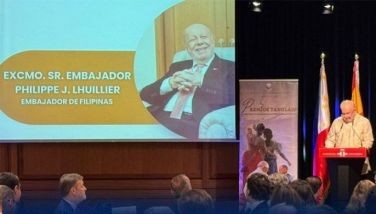Battling the classroom shortage
MANILA, Philippines - Forty-five-year-old banana vendor Lilia Pangilinan is worried that come June this school year, her eight-year-old daughter Milliyah will be placed in an evening shift again.
Lilia, who lives in a shanty with four other children, lamented Milliyah’s evening schedule in a public elementary school last year since she always stayed up late at night to finish her assignments or study for exams. The night schedule was also taking a toll on the young child’s stick-thin body, and the girl had to walk home alone at night because her mother could not fetch her.
With more students enrolling in and transferring from private schools, public schools are forced to implement a three-shift schedule for elementary and high school students in some Metro Manila schools.
Education secretaries have come and go, but all have agreed about the real problem of classroom shortage. According to the Department of Education, the current student-classroom ratio is 100-to-1 in single shift and 50-1 in two shifts.
Former education secretary Juan Miguel Luz said in the past that to hold a singe shift, the ideal situation for every classroom in the country meant a shortage of 74,115 classrooms. To go on a double shift using classrooms twice a day to accommodate 50 students per class, the shortage is 6,832. This shortage necessitates a third shift to accommodate more students like Milliyah.
This school year, in preparation for the influx of students, the Department of Education has allocated P1.7 billion for the construction of new classrooms and repair of old ones. It hopes to meet its target of 1,690 new and repair of 1,282 classrooms all over the country.
In tune with the “Education for All” program, one of the key points under the government’s 10-point agenda, President Arroyo’s school building project has built 396 classrooms; congressmen and senators, 1,740; donations of overseas-based Filipinos, 500; DepEd and DPWH, 450; and 116 classrooms from the Federation of Filipino-Chinese Chambers of Commerce and Industry Inc. (FFCCCII).
President Arroyo has just recently donated P35 million to the FFCCCII for its school projects, and signed EO 284 authorizing the federation to conduct fund-raising for its Operation Barrio Schools project, likewise exempting donors from taxes.
The government admittedly said it needs the help of private organizations and foundations to address the issue of building more classrooms for the growing population of elementary and high school students in public schools, especially in remote parts of the country.
FFCCCII vice chairman for media William Tieng told the STAR they have been donating classrooms since 1955, having constructed 4,000 school buildings (of two classrooms each) and 10,000 classrooms at half the estimated cost. The FFCCCII is the first to start the two-classroom school building donations through Operation Barrio schools.
“We hope to build 11,000 classrooms to help improve the learning of schoolchildren, We feel that by helping in the education of the youth, we will bring forth a new generation of educated Filipinos,” he said.
The Angelo King Foundation Inc. (AKFI) also builds not just classrooms but whole buildings/ learning establishments for poor students, in line with its philosophy that providing for the poor is synonymous to “teaching them how to fish and fend for themselves.”
In San Miguel Elementary School, Tarlac, the principal and teachers hold fund-raising activities to raise money for their school needs and augment funds for the improvement of their school.
Both local government units and private sector In Nueva Ecija are joining forces to add more classrooms in public schools in the province, said Jess Lorenzo, a public education development advocate in Nueva Ecija who also works with the San Isidro local government.
These examples of cooperation between local government units and the private sector, and among teachers, barangay personnel and parents in the community is doing much to inspire other communities to get to work and share what they can to improve the public school environment. Last year, soldiers and military personnel put aside their guns to repair and refurbish many public schools.
With stakeholders’ concerted effort, greater commitment from the government and the private sector, there’s hope in winning the battle over classroom shortage and other education woes.
- Latest


























